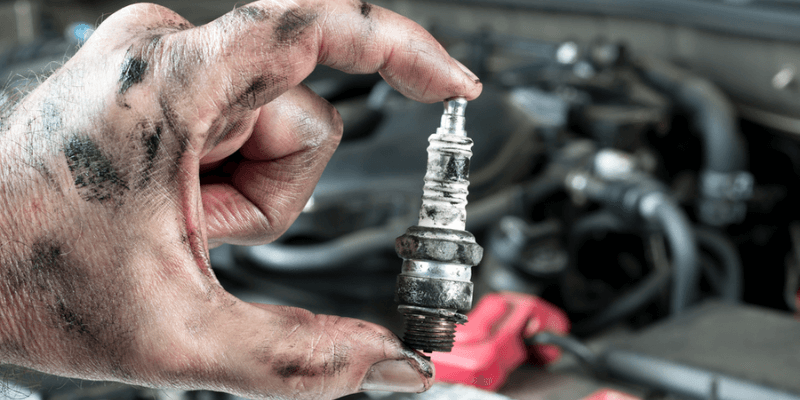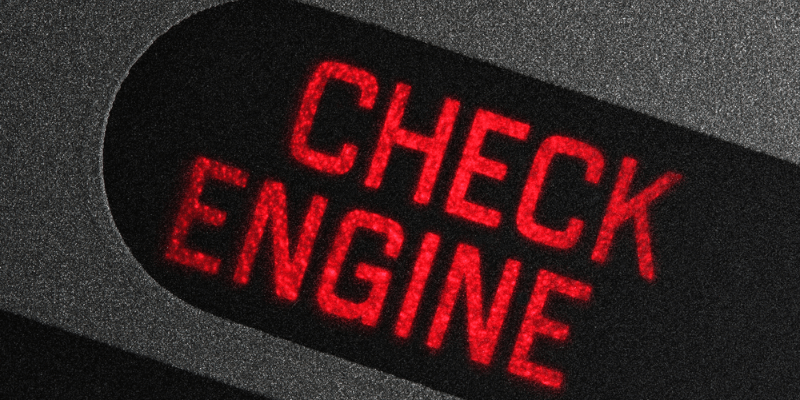 Swipe for more categories
Swipe for more categories 
Vehicle Care
Warning: Undefined variable $post_id in /var/www/dsw/wp-content/themes/DriveSmart_2024_v1.1/the-complete-guide-to-vehicle-care/template.php on line 33
March 18, 2019
Warning: Undefined variable $post_id in /var/www/dsw/wp-content/themes/DriveSmart_2024_v1.1/the-complete-guide-to-vehicle-care/template.php on line 47
Vehicle Care
Warning: Undefined variable $post_id in /var/www/dsw/wp-content/themes/DriveSmart_2024_v1.1/the-complete-guide-to-vehicle-care/template.php on line 48
March 18, 2019
Vehicle Care

When it comes to keeping up with scheduled maintenance for a vehicle, most drivers are typically aware of only the most common recommended services such as replacing engine oil, transmission fluid and rotating a vehicle’s tires. With a large number of older vehicles on the road, maintenance is recommended more now than ever before. Below is a breakdown of the recommended services by vehicle system:
Vehicle Engine
The engine is one of the most important components on a vehicle, as it provides power to the vehicle and allows it to operate. Keeping up on all scheduled maintenance is recommended to ensure the most optimal life cycle for a vehicle.
Standard Engine Maintenance

Changing the Oil
Replacing a vehicle’s engine oil is one of the most common scheduled engine maintenance procedures known to the average consumer. Oil changes are also one of the most important standard services that cannot afford to be overlooked. When operated, the vehicle’s engine is constantly passing air in and out of its multiple intakes. This air often contains debris which eventually sticks to the oil coating of the interior of the engine. Once the oil is full of debris, the risk of damaging the internal components of the engine is much greater. For this reason, it is required to flush out any of the old debris-filled oil from the vehicle’s engine.
Generally, standard oil change services are relatively inexpensive and completed quickly. Depending on the type of oil inside of a vehicle’s engine, replacement times will vary.

Changing the Engine Filters
Filters directly related to the engine are typically overlooked on vehicles despite being a vital car component of the engine. Three major filters that require replacements periodically are found in the engine.
Oil Filter
While the debate is still out on the exact mileage recommended to replace a vehicle’s oil filter, there is no denying it is an important part to replace. Most oil manufacturers recommend replacing a vehicle’s oil filter every 3,000 miles, or every time a vehicle oil is changed. However, some independent mechanics state this is unnecessary. The average mileage recommended by most mechanics is closer to 7,500 miles. Regardless, it is important never to allow a vehicle to exceed 7,500 miles without an oil filter replacement. Exceeding this mileage puts the vehicle at risk for extensive damage.
Air Filter
The exact replacement time of an air filter is a little more tricky to determine, as the make and model of a vehicle are put into consideration when calculating the recommended replacement variable. While some manufacturers such as Chevrolet recommend vehicle owners replace their filters every 45,000 miles, others like Ford and Hyundai recommend an air filter replacement every 30,000 miles. This estimate is subject to change based on the environment the vehicle is operating in, and how often it is driven.
One of the easiest ways to tell if an air filter requires replacement is by lifting the vehicle’s hood and checking the air filter compartment. If the air filter is a dark black/gray color, it needs to be replaced. On most vehicles, the check engine light may illuminate on the vehicle’s dashboard denoting a mass airflow error. This informs the vehicle’s owner that the vehicle requires an air filter replacement.
Fuel Filter
The fuel filter is often one of the most unheard of filters that require standard maintenance. Located near the fuel tank, the fuel filter catches any debris or impurities in gasoline before sending the fuel to a vehicle’s engine. While the incorporation of fuel injection systems on many vehicles has removed the overall burden on the fuel filter, it is still recommended to change them periodically to avoid damage to the fuel pump. This allows for the fuel tank to have full communication with the engine.
Most mechanics recommend replacing the fuel filter every 20,000 – 40,000 miles. Other mechanics state replacements could be pushed back until 60,000 or 90,000 miles. Consulting with a vehicle’s owners manual will provide vehicle specific information with accurate replacement times.
Changing the Belts

Among the more important components in the engine that require semi-regular replacement, the individual belts are integral to the functionality of the operation of a vehicle. If these belts are not maintained regularly, the vehicle runs the risk of damaging the internals of the engine. Component damage issues caused by neglecting to change the belts will result in a high repair bill which often exceeds the current value of the vehicle.
Serpentine Belt
As one of the most common belts found inside of engines today, the serpentine belt is an important part of the operation of a majority of a vehicle’s components. The serpentine belt provides functionality to the power steering, air conditioning, water pump, and the alternator. As the serpentine belt ages, cracks and forms tears along the top of the belt, these belts must be periodically replaced. The event of a belt slipping will fail one of the listed components until the serpentine belt is fixed, potentially causing additional damage to the engine. This is why it is recommended to replace the serpentine belt every 60,000 to 90,000 miles.
Timing Belts
Timing belts are another important belt directly located on the engine of a vehicle. On standard combustion engines, the timing belt controls the timing of the engine’s valves, allowing them to open and close in sync with the pistons. This allows for smooth operation. If the timing belt is worn or damaged, the engine’s timing may go out of sync and cause major damage to the engine. Replacing the timing belt is recommended at every 60,000 to 90,000 miles.
Tune Ups

Tune-ups are normally recommended to be scheduled once a year or every 30,000 miles. While a tune-up may include more part replacements at some repair shops over others, the key components will generally remain the same. The parts normally covered in a tune-up are:
Spark Plugs
Spark plugs are an integral part of the operation of all combustion engines. As the engine is in operation, fuel is injected into an airtight compartment that encases the piston. As the piston completes its cycle, the top of the piston will strike the bottom of the spark plug, creating a spark. This is what provides the engine with the combustion needed to convert into power. If a spark plug goes bad, misfires or loss of power will occur.
Spark Plug Wires
Spark plug wires connect directly to the spark plugs to deliver the power needed to create the initial spark. When the spark plug wires begin to fray, a multitude of issues will occur with a vehicle including decreased power, decreased acceleration, and poor fuel efficiency. Typically spark plug wires will be replaced when performing a tune-up but could require replacement sooner depending on the natural wear over time.
Fuel Injector Cleaning
Some tune-ups may include a fuel injector cleaning service, which typically consists of the mechanic wiping down and removing gunk and corrosion from around the fuel injector systems. Fuel injector cleaner is sometimes included with the service or recommended after the service is complete.
Check Engine Timing
An inspection of the engines timing belt is performed to ensure the belt is operating in sync with the rest of the engine. Mechanics will also check the health of the belt itself and inform the vehicle owner if it requires replacement soon.
Check Engine Light

For individuals with older vehicles, the presence of a check engine light may not be anything new. While the appearance of a check engine lights typically denotes an issue that needs immediate fixing, some vehicle owners will allow their check engine light to stay on if the issue doesn’t need immediate repair. This is typical in most states that do not issue an emissions test, as some issues in the emissions system will cause the check engine light to illuminate but not affect the overall operation of the vehicle.
The danger comes from newer issues that may arise in other systems of the car that would cause the check engine light to illuminate. Due to the presence of the illuminated light, it is nearly impossible to tell that a new issue has arisen. Purchasing an OBD reader, or bringing a vehicle to a nearby AutoZone or auto parts store, will test the onboard computer and read what errors are causing the light to illuminate. This may result in new error codes being shown, which will inform the vehicle’s owner that service is needed.
"> /var/www/dsw/wp-content/themes/DriveSmart_2024_v1.1/the-complete-guide-to-vehicle-care/template.php on line 149
">
"> /var/www/dsw/wp-content/themes/DriveSmart_2024_v1.1/includes/quote-modal.php on line 8
">




